A Dual Band Frequency Reconfigurable Origami Magic Cube Antenna for Wireless Sensor Network Applications
Abstract
:1. Introduction
2. Origami Magic Cube Antenna Design and Fabrication
3. Measurement Results
4. Conclusions
Acknowledgments
Author Contributions
Conflicts of Interest
References
- Song, C.T.P.; Hu, Z.H.; Kelly, J.; Hall, P.S.; Gardner, P. Wide tunable dual-band reconfigurable antenna for future wireless devices. In Proceedings of the Loughborough Antennas and Propagation Conference, Loughborough, UK, 16–17 November 2009; Volume 45, pp. 601–604. [Google Scholar]
- Boutejdar, A.; Ibrahim, A.A.; Burte, E.P. Novel Microstrip Antenna Aims at UWB Applications. Microw. RF 2015, 62–66. [Google Scholar] [CrossRef]
- Ibrahim, A.A.; Abdalla, M.A.; Boutejdar, A. Resonator switching techniques for notched ultra-wideband antenna in wireless applications. IET Microw. Antennas Propag. 2015, 9, 1468–1477. [Google Scholar]
- Kruesi, C. Design and development of a novel 3-D cubic antenna for wireless sensor networks (WSNs) and RFID applications. IEEE Trans. Antennas Propag. 2009, 57, 3293–3299. [Google Scholar] [CrossRef]
- Kruesi, C.; Tentzeris, M.M. “Magic-cube” antenna configurations for ultra compact RFID and wireless sensor nodes. In Proceedings of the IEEE International Symposium on Antennas and Propagation and USNC/URSI National Radio Science Meeting, San Diego, CA, USA, 5–11 July 2008; pp. 4–7. [Google Scholar]
- Kuribayashi-Shigetomi, K.; Onoe, H.; Takeuchi, S. Cell Origami: Self-Folding of Three-Dimensional Cell-Laden Microstructures Driven by Cell Traction Force. PLoS ONE 2012, 7, 72–75. [Google Scholar] [CrossRef] [PubMed]
- Morgan, J.; Magleby, S.P.; Howell, L.L. An Approach to Designing Origami-Adapted Aerospace Mechanisms. J. Mech. Des. 2016, 138, 052301. [Google Scholar] [CrossRef]
- Liu, X.; Yao, S.; Gonzalez, P.; Georgakopoulos, S.V. A novel ultra-wideband origami reconfigurable quasi-taper helical antenna. In Proceedings of the 2016 IEEE Antennas and Propagation Society International Symposium, Fajardo, Puerto Rico, 26 June–1 July 2016; pp. 839–840. [Google Scholar]
- Yao, S.; Liu, X.; Georgakopoulos, S.V. Morphing Origami Conical Spiral Antenna Based on the Nojima wrap. IEEE Trans. Antennas Propag. 2017, 65, 2222–2232. [Google Scholar] [CrossRef]
- Yoon, J.H.; Jae, S.; Young, H.; Rhee, C. A Novel Monopole Antenna with Two Arc-Shaped Strips for WLAN/WiMAX Application. J. Electromagn. Eng. Sci. 2015, 15, 6–13. [Google Scholar] [CrossRef]
- Lee, S.W.; Sung, Y. A Polarization Diversity Patch Antenna with a Reconfigurable Feeding Network. J. Electromagn. Eng. Sci. 2015, 15, 115–119. [Google Scholar] [CrossRef]
- Shah, S.I.H.; Lee, D.; Tentzeris, M.; Lim, S. A Novel High-Gain Tetrahedron Origami Antenna. IEEE Antennas Wirel. Propag. Lett. 2016, 16, 848–851. [Google Scholar] [CrossRef]
- Yao, S.; Liu, X.; Gibson, J.; Georgakopoulos, S.V. Deployable origami Yagi loop antenna. In Proceedings of the IEEE International Symposium on Antennas and Propagation & USNC/URSI National Radio Science Meeting, Vancouver, BC, Canada, 19–24 July 2015; pp. 2215–2216. [Google Scholar]
- Hayes, G.J.; Liu, Y.; Genzer, J.; Lazzi, G.; Dickey, M.D. Self-folding origami microstrip antennas. IEEE Trans. Antennas Propag. 2014, 62, 5416–5419. [Google Scholar] [CrossRef]
- Shah, S.I.H.; Lee, D.; Tentzeris, M.; Lim, S. Low-Cost Circularly Polarized Origami Antenna. IEEE Antennas Wirel. Propaga. Lett. 2017, 16, 848–851. [Google Scholar] [CrossRef]
- Yao, S.; Liu, X.; Georgakopoulos, S.V.; Tentzeris, M.M. A novel reconfigurable origami spring antenna. In Proceedings of the Antennas and Propagation Society International Symposium, Memphis, TN, USA, 6–11 July 2014; Volume 2, pp. 374–375. [Google Scholar]
- Liu, X.; Yao, S.; Cook, B.S.; Tentzeris, M.M.; Georgakopoulos, S.V. An Origami Reconfigurable Axial-Mode Bifilar Helical Antenna. IEEE Trans. Antennas Propag. 2015, 63, 5897–5903. [Google Scholar] [CrossRef]
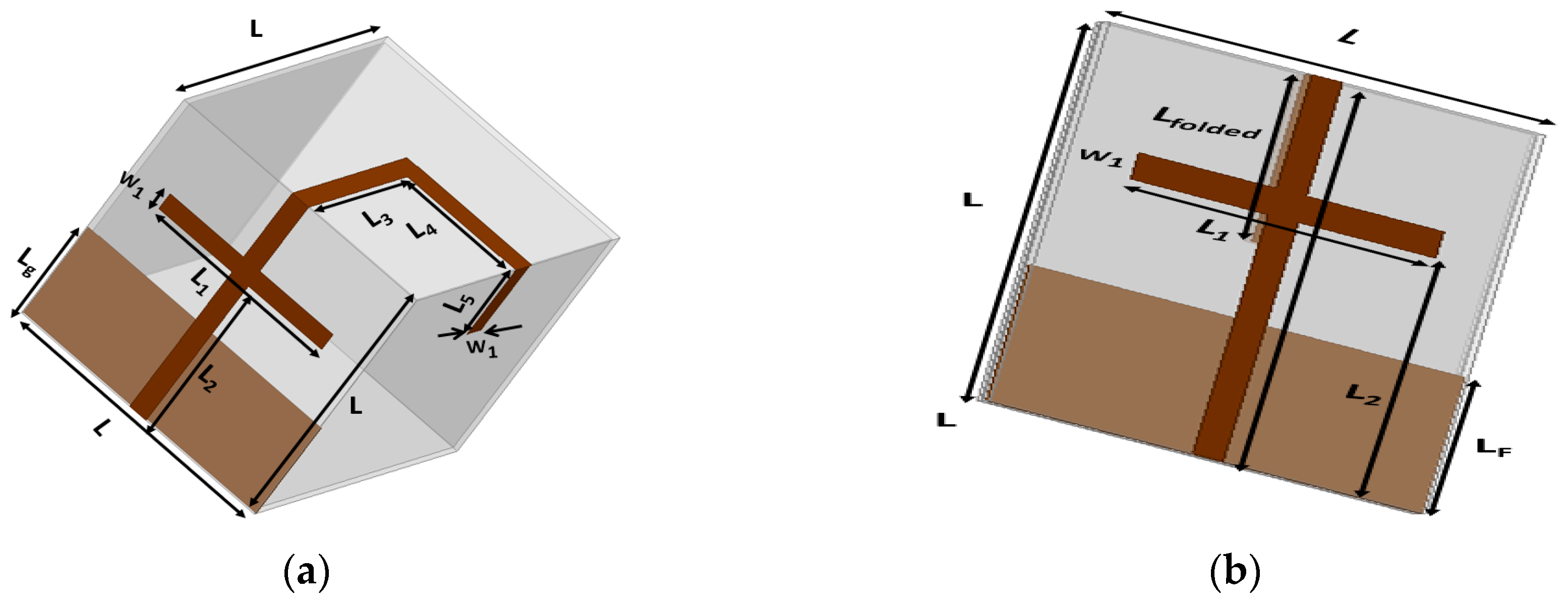

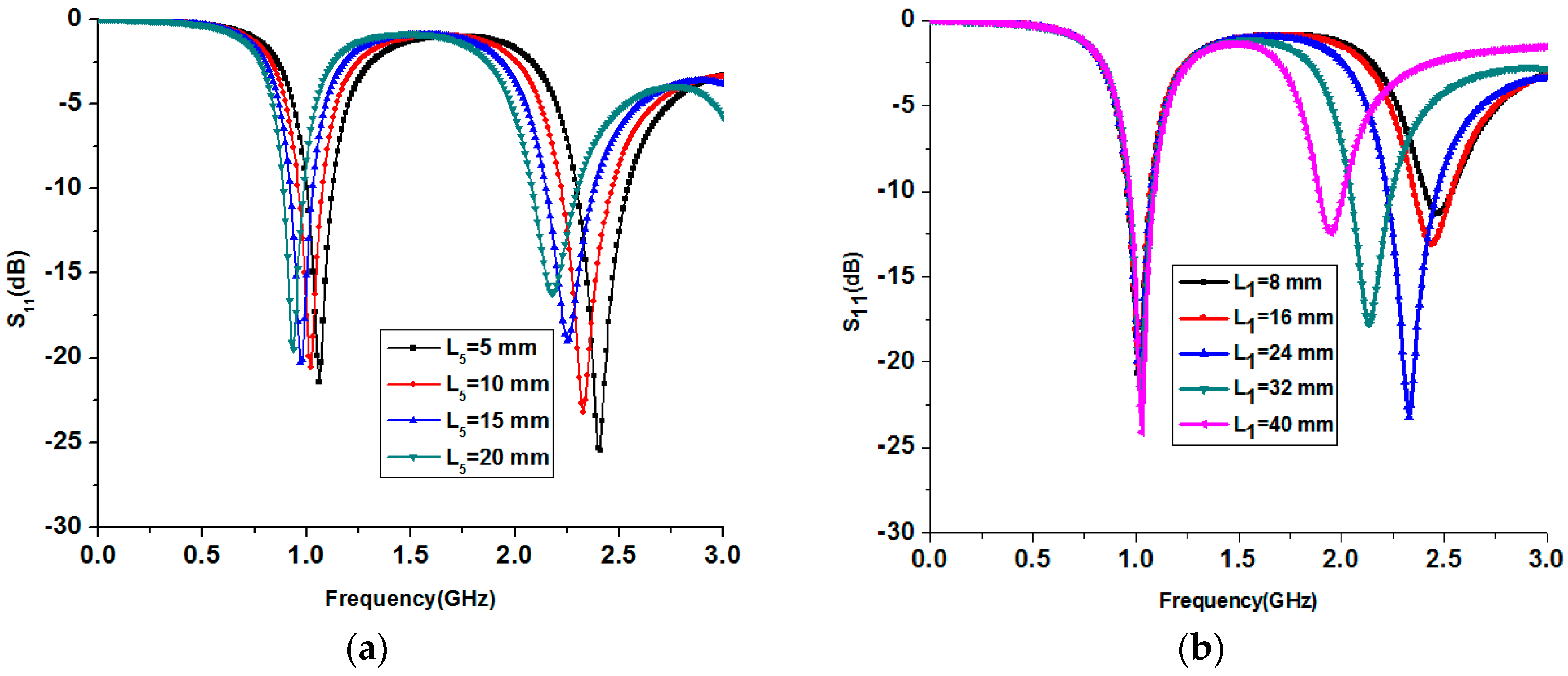

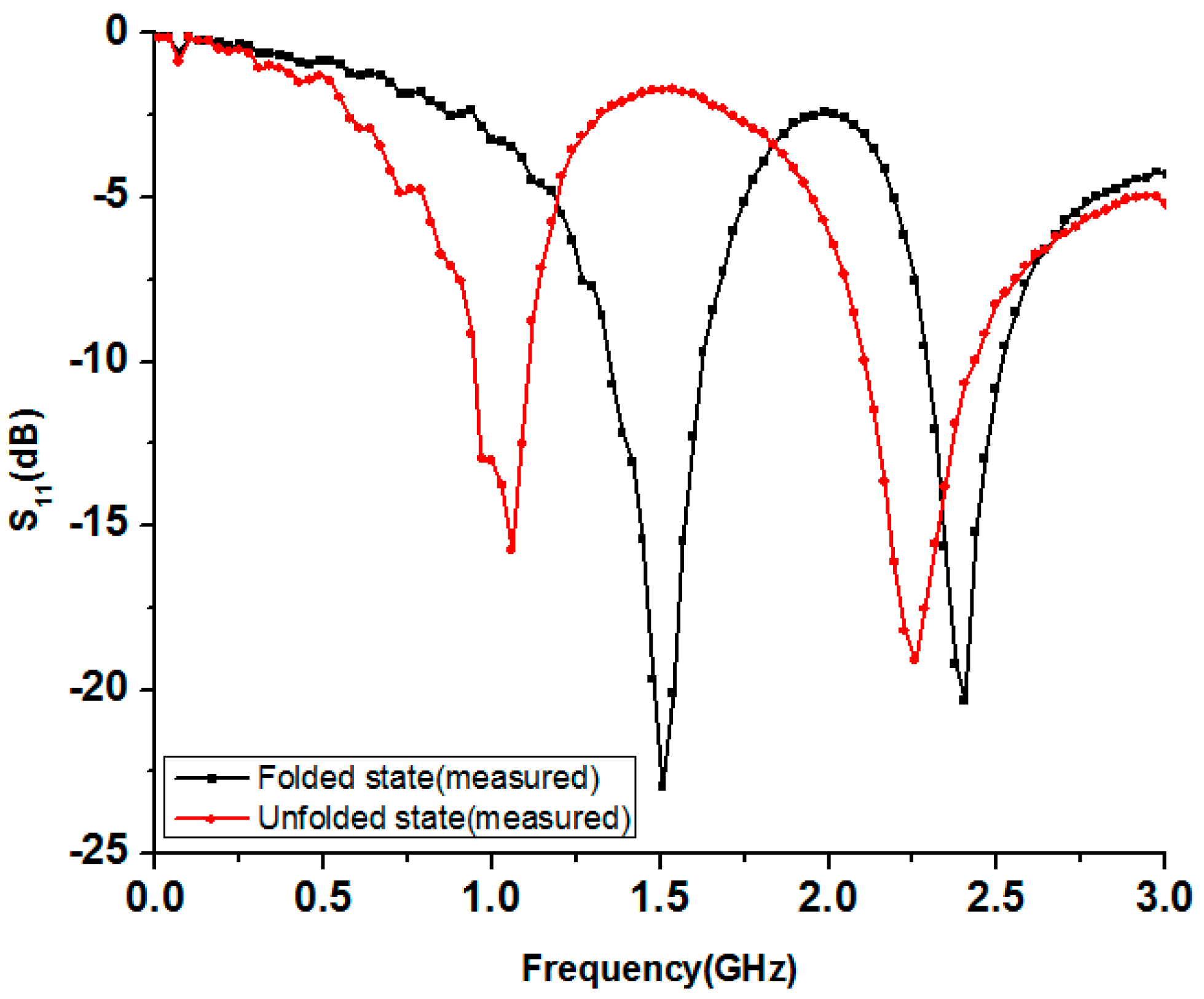
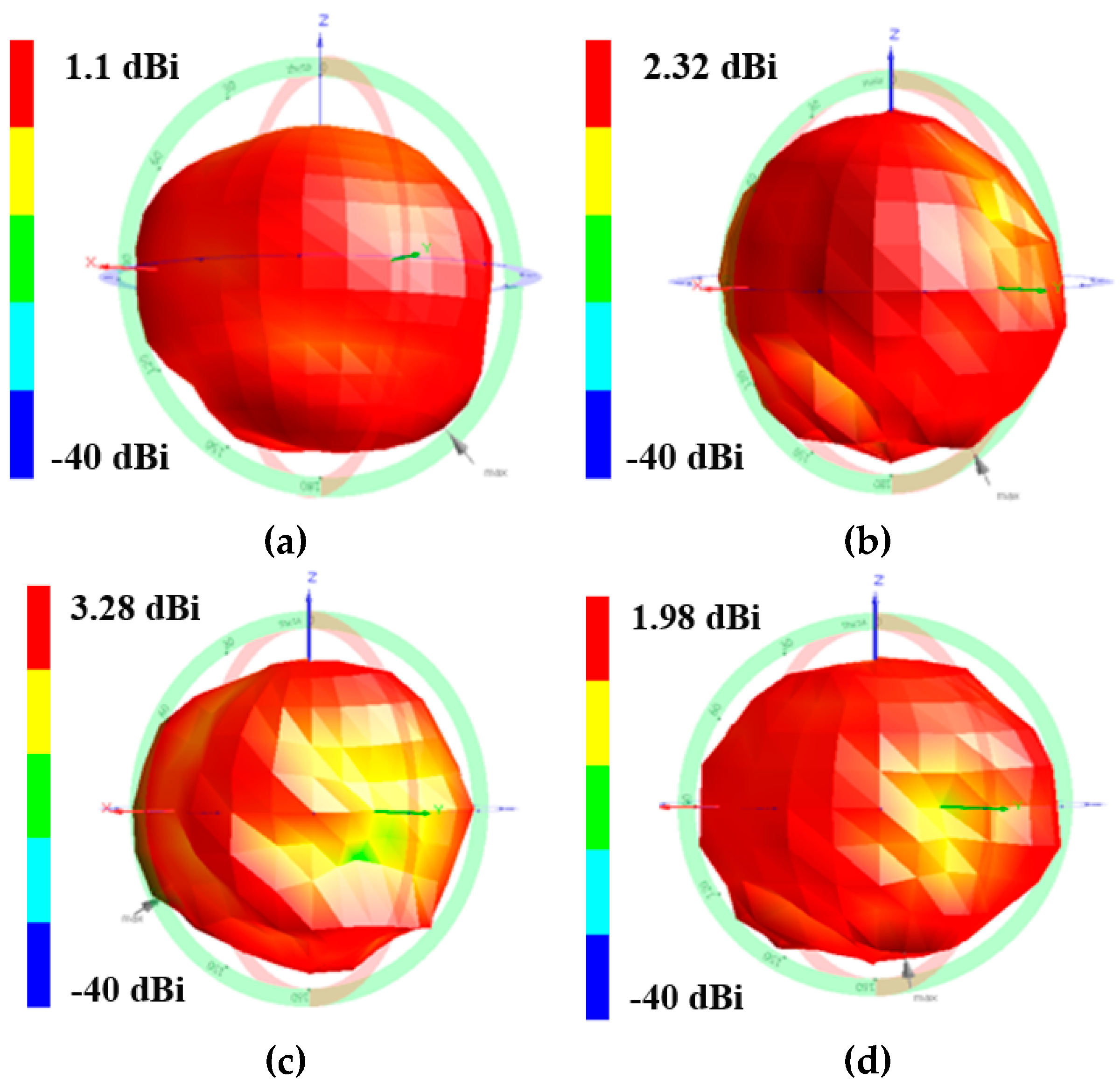
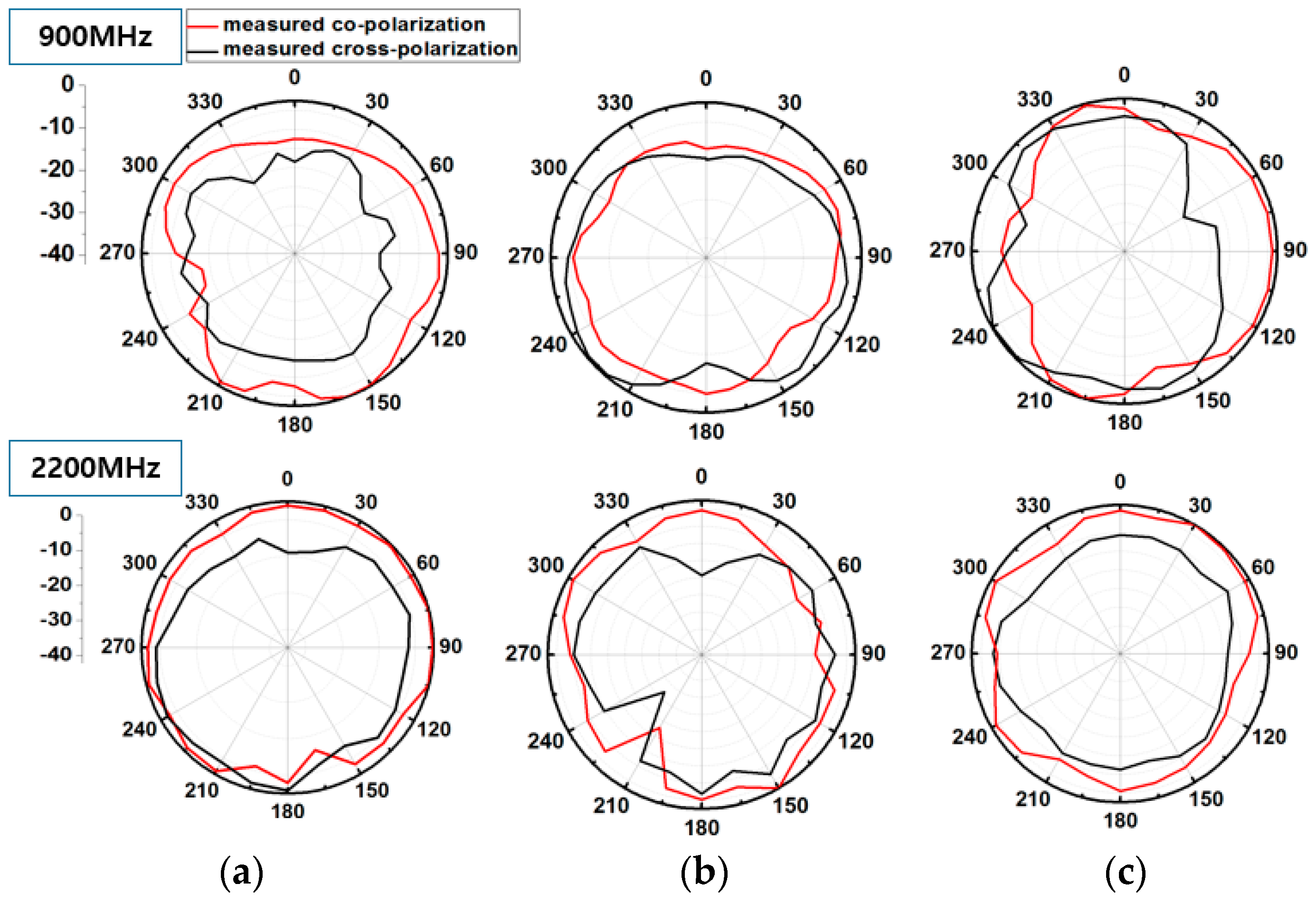
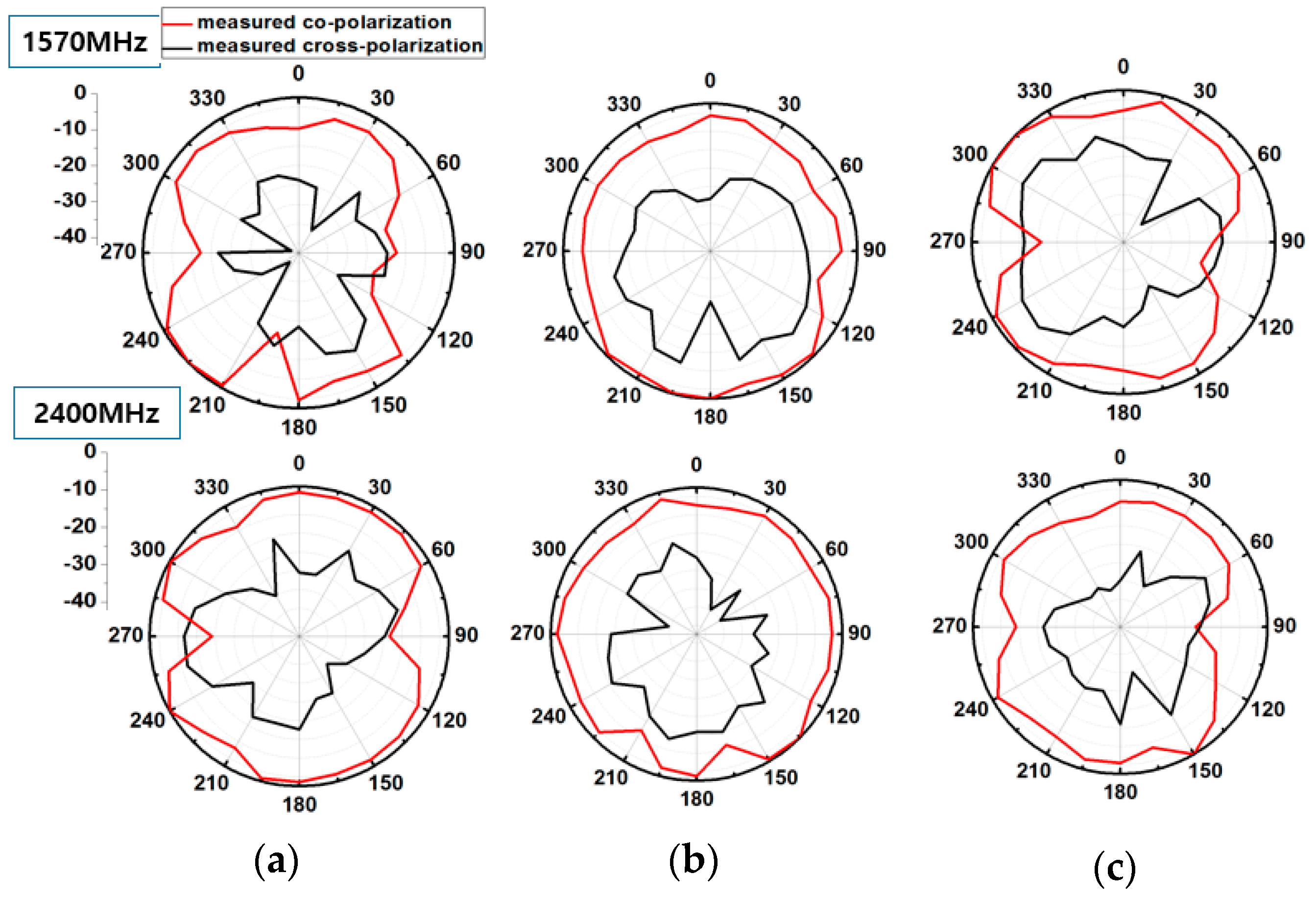
© 2017 by the authors. Licensee MDPI, Basel, Switzerland. This article is an open access article distributed under the terms and conditions of the Creative Commons Attribution (CC BY) license (http://creativecommons.org/licenses/by/4.0/).
Share and Cite
Shah, S.I.H.; Lim, S. A Dual Band Frequency Reconfigurable Origami Magic Cube Antenna for Wireless Sensor Network Applications. Sensors 2017, 17, 2675. https://doi.org/10.3390/s17112675
Shah SIH, Lim S. A Dual Band Frequency Reconfigurable Origami Magic Cube Antenna for Wireless Sensor Network Applications. Sensors. 2017; 17(11):2675. https://doi.org/10.3390/s17112675
Chicago/Turabian StyleShah, Syed Imran Hussain, and Sungjoon Lim. 2017. "A Dual Band Frequency Reconfigurable Origami Magic Cube Antenna for Wireless Sensor Network Applications" Sensors 17, no. 11: 2675. https://doi.org/10.3390/s17112675




